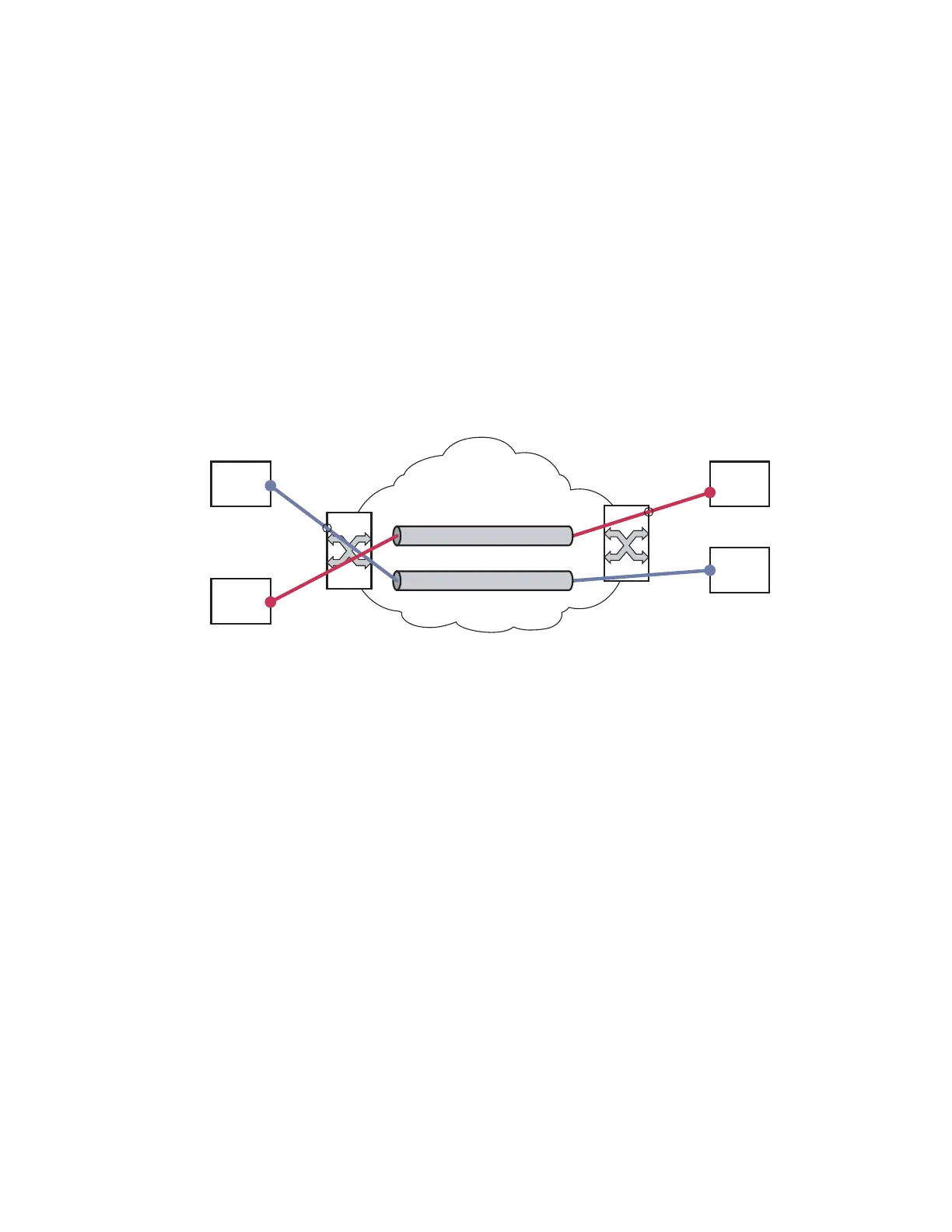Virtual Leased Line Services
7210 SAS M Services Guide Page 137
Epipe Service Overview
An Epipe service is a Layer 2 point-to-point service where the customer data is encapsulated and
transported across a service provider’s network. An Epipe service is completely transparent to the
subscriber’s data and protocols. The Epipe service does not perform any MAC learning. A local
Epipe service consists of two SAPs on the same node, whereas a distributed Epipe service consists
of two SAPs on different nodes.
Each SAP configuration includes a specific port on which service traffic enters the 7210 SAS
router from the customer side (also called the access side). Each port is configured with an
encapsulation type. If a port is configured with an IEEE 802.1Q (referred to as Dot1q)
encapsulation, then a unique encapsulation value (ID) must be specified.
Figure 20: Epipe/VLL Service
Epipe with PBB
A pbb-tunnel may be linked to an Epipe to a B-VPLS. MAC switching and learning is not required
for the point-to-point service (all packets ingressing the SAP are PBB encapsulated and forwarded
to the PBB tunnel to the backbone destination MAC address and all the packets ingressing the B-
VPLS destined for the ISID are PBB de-encapsulated and forwarded to the Epipe SAP. A fully
specified backbone destination address must be provisioned for each PBB Epipe instance to be
used for each incoming frame on the related I-SAP. If the backbone destination address is not
found in the B-VPLS FDB then packets may be flooded through the B-VPLSs
All B-VPLS constructs may be used including B-VPLS resiliency and OAM. Not all generic
Epipe commands are applicable when using a PBB tunnel.
Customer 1
Customer 2
Customer 2
Customer 1
EPIPE (VLL) Service 1
EPIPE (VLL) Service 2
IP/MPLS Network

